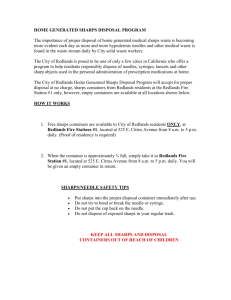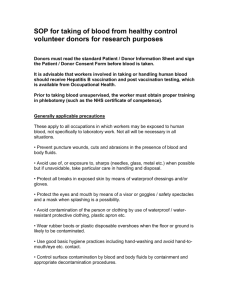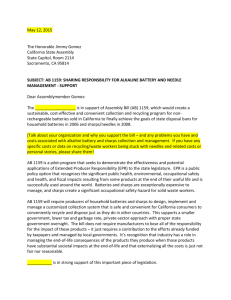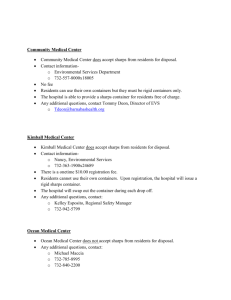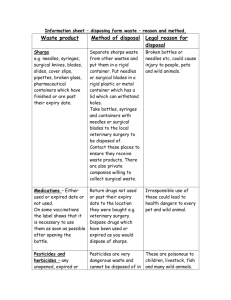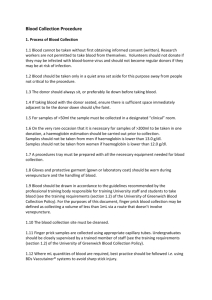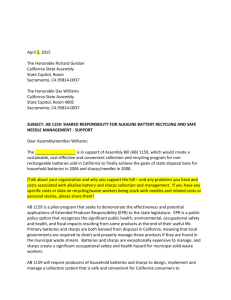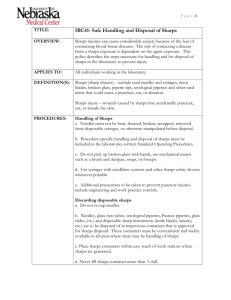New State Law Bans Needles, Syringes from Household Trash
advertisement
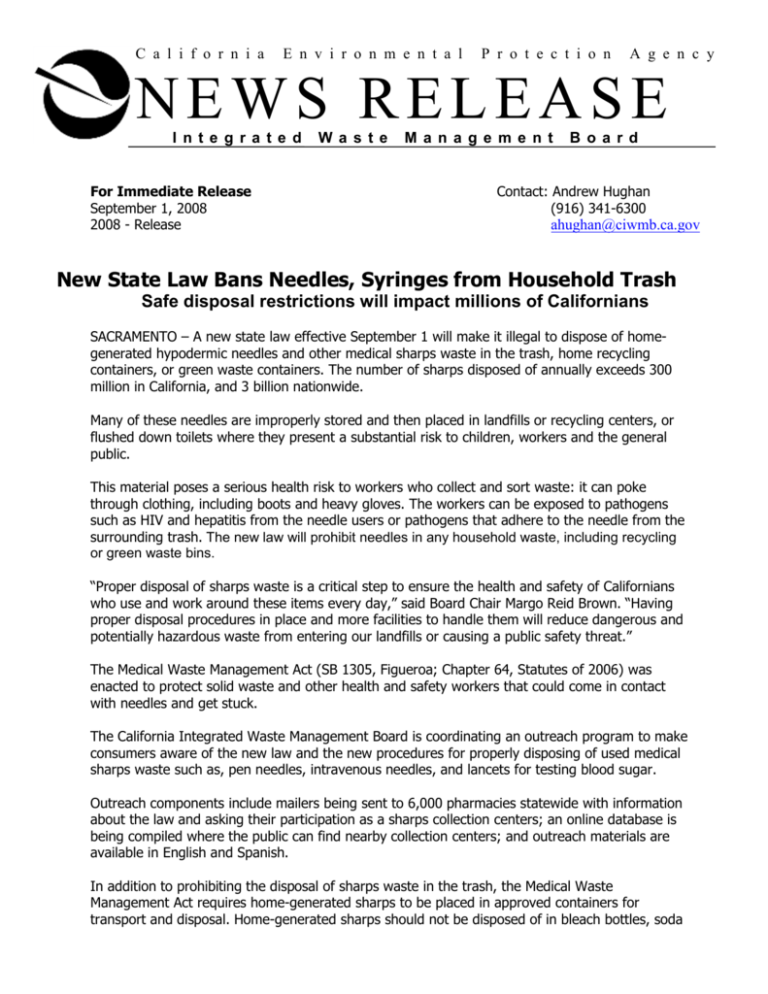
C a l i f o r n i a E n v i r o n m e n t a l P r o t e c t i o n A g e n c y NEWS RELEASE I n t e g r a t e d For Immediate Release September 1, 2008 2008 - Release W a s t e M a n a g e m e n t B o a r d Contact: Andrew Hughan (916) 341-6300 ahughan@ciwmb.ca.gov New State Law Bans Needles, Syringes from Household Trash Safe disposal restrictions will impact millions of Californians SACRAMENTO – A new state law effective September 1 will make it illegal to dispose of homegenerated hypodermic needles and other medical sharps waste in the trash, home recycling containers, or green waste containers. The number of sharps disposed of annually exceeds 300 million in California, and 3 billion nationwide. Many of these needles are improperly stored and then placed in landfills or recycling centers, or flushed down toilets where they present a substantial risk to children, workers and the general public. This material poses a serious health risk to workers who collect and sort waste: it can poke through clothing, including boots and heavy gloves. The workers can be exposed to pathogens such as HIV and hepatitis from the needle users or pathogens that adhere to the needle from the surrounding trash. The new law will prohibit needles in any household waste, including recycling or green waste bins. “Proper disposal of sharps waste is a critical step to ensure the health and safety of Californians who use and work around these items every day,” said Board Chair Margo Reid Brown. “Having proper disposal procedures in place and more facilities to handle them will reduce dangerous and potentially hazardous waste from entering our landfills or causing a public safety threat.” The Medical Waste Management Act (SB 1305, Figueroa; Chapter 64, Statutes of 2006) was enacted to protect solid waste and other health and safety workers that could come in contact with needles and get stuck. The California Integrated Waste Management Board is coordinating an outreach program to make consumers aware of the new law and the new procedures for properly disposing of used medical sharps waste such as, pen needles, intravenous needles, and lancets for testing blood sugar. Outreach components include mailers being sent to 6,000 pharmacies statewide with information about the law and asking their participation as a sharps collection centers; an online database is being compiled where the public can find nearby collection centers; and outreach materials are available in English and Spanish. In addition to prohibiting the disposal of sharps waste in the trash, the Medical Waste Management Act requires home-generated sharps to be placed in approved containers for transport and disposal. Home-generated sharps should not be disposed of in bleach bottles, soda containers, or detergent containers. Instead, users should store the sharps waste in red biohazardous containers for easy identification. Bio-hazard containers are available for purchase by consumers. Additionally, some jurisdictions have containers available at no cost. Information can be found at county health websites. Bio-hazard containers can be disposed of in one of four ways: Taken to a local Household Hazardous Waste Facility; Taken to a Medical Waste Generator Facility (hospitals, clinics, or doctors’ offices); Shipped through a mail-back program; Taken to an approved home-generated sharps waste collection location. To find a location to properly dispose of home-generated sharps, go to the California Integrated Waste Management Board’s Medical Waste Disposal Directory at: http://www.ciwmb.ca.gov/HHW/HealthCare/Collection/. For more information on sharps, go to www.ciwmb.ca.gov/HHW/Sharps. The California Integrated Waste Management Board is the state’s leading authority on recycling and waste reduction. It promotes reducing waste whenever possible, managing all materials to their highest and best use, and protecting public health and safety and the environment. The California Integrated Waste Management Board is one of six boards, departments, and offices within the California Environmental Protection Agency (Cal/EPA). ###


